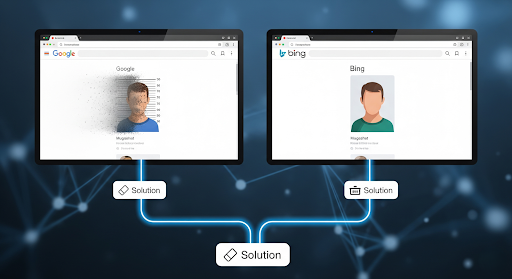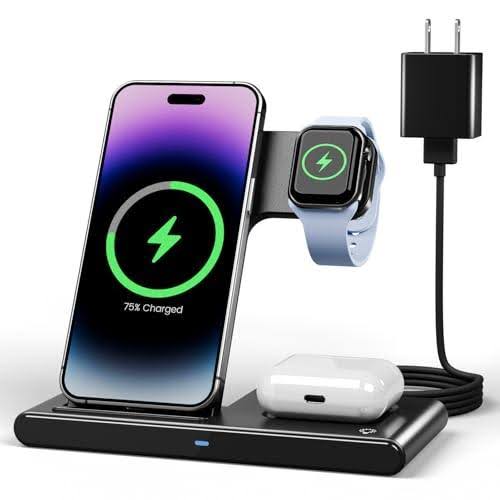When a Mugshot Disappears From Google Images but Stays in Bing — and How to Remove Both
varsha August 18, 2025 0 COMMENTS
You search your name one day and notice something strange.
The mugshot that’s been haunting your Google Images results for months is finally gone. Relief sets in—until you try another search engine and there it is, still staring back at you from the screen.
It’s a frustrating reality for many: even when one search engine removes a damaging image, it can still live on somewhere else. And because most people don’t limit their searches to one platform, that lingering image can still harm your reputation, career, and relationships.
Here’s why it happens, why it matters, and how you can remove the image from both places for good.
Table of Contents
Why Mugshots Show Up — and Stick Around
Mugshots tend to spread quickly online because they’re often treated as public records. Once posted to a site, they can be indexed by multiple search engines and copied to other sites in hours.
Even if the original site removes the image, the problem doesn’t automatically solve itself. Search engines keep their indexes, and each one refreshes on a different schedule. That’s why a photo might disappear from Google’s results but remain highly visible on Bing for weeks—or even months—afterward.
Why Google Might Remove a Mugshot
Google has well-defined policies for content removal and regularly updates its algorithms to downrank or de-index certain types of harmful content. A mugshot might disappear because:
- It was removed from the hosting site, and Google re-crawled the page.
- It violated content guidelines (for example, harassment or exploitation concerns).
- Algorithm changes favored more authoritative or relevant content over the mugshot page.
These changes can work in your favor—but only if the removal is complete across platforms.
Why Bing Might Hold Onto It
Bing’s indexing works differently. It can hold onto older content longer, especially if:
- The image is hosted on a site with a strong domain authority.
- Bing’s crawl schedule for that page is less frequent.
- The image still has backlinks pointing to it from other websites.
In some cases, Bing may keep showing cached or outdated versions of the page until you specifically request removal.
The Real-World Impact of a Persistent Mugshot
It’s not just about what’s visible—it’s about what people think when they see it.
A single outdated image can:
- Make job applications more challenging, as most employers conduct online searches.
- Damage personal relationships, especially with people who don’t know the context.
- Harm business opportunities by planting seeds of doubt before you can explain.
The longer it stays online, the more it becomes part of your permanent search history.
How to Remove a Mugshot From Google
If the image is still on Google, start here:
- Contact the site owner
Politely request removal, explaining why it’s harmful and, if applicable, providing documentation (like proof of a dismissed case). - Use Google’s removal tools
Submit a request via its removal forms, especially if the content is outdated or violates policy. - Monitor the results
Keep checking to ensure the image remains hidden, as some pages may reappear after being updated.
How to Remove a Mugshot From Bing
Even if Google has removed the image, you may need to act separately with Bing:
- Check the source
Make sure the hosting site has deleted the image. Bing won’t remove it from search if the file still exists online. - Submit a removal request
Use Bing’s content removal form to request that the image be taken out of search results. - Follow up
Response times can vary. Keep a record of your request and check back until it’s processed.
Working With a Reputation Management Firm
Tackling mugshot removals across multiple search engines can be time-consuming and frustrating, especially if you’re dealing with various hosting sites.
Firms like NetReputation specialize in:
- Coordinating with hosting sites for fast takedowns.
- Filing search engine removal requests.
- Creating and optimizing positive content to replace negative results.
- Monitoring your search presence to prevent reappearance.
This combined approach helps ensure the image isn’t just removed—it’s replaced with content you actually want people to see.Using Google’s remove outdated content tool can also help speed up the process by clearing out old or irrelevant information from search results.
Preventing Future Issues
Once your image is gone from both Google and Bing, take steps to reduce the chances of it resurfacing:
- Claim your name online with professional profiles and a personal website.
- Publish regular positive content so you control what shows up first.
- Monitor your search results monthly so you can act quickly if something new appears.
The Bottom Line
Getting a mugshot removed from one search engine is progress—but not the finish line. Until it’s gone from every major search engine, it’s still a risk to your reputation.
By understanding how each platform works, taking direct action, and—if needed—partnering with professionals, you can close the loop and make sure your search results tell the story you want told.
RELATED ARTICLES
Latest Articles
 Jagermeister 750ml Price in India: Full …In Whisky Prices
Jagermeister 750ml Price in India: Full …In Whisky Prices Building a Scalable Payment Infrastructu…In Technology
Building a Scalable Payment Infrastructu…In Technology Tech-Savvy Ways to Streamline Your Finan…In Business
Tech-Savvy Ways to Streamline Your Finan…In Business Magic Moments Vodka Price in India: Size…In General
Magic Moments Vodka Price in India: Size…In General The Role of Claims Agencies in Holding A…In Tips
The Role of Claims Agencies in Holding A…In Tips How Embracing Cloud‑Native Strategies Tr…In Technology
How Embracing Cloud‑Native Strategies Tr…In Technology Poorvika Mobiles Pun: Best Place for You…In Technology
Poorvika Mobiles Pun: Best Place for You…In Technology Why Choosing the Right NEET Coaching Mak…In Education
Why Choosing the Right NEET Coaching Mak…In Education
stopie.com is a participant in the Amazon Services LLC Associates Program, an affiliate advertising program designed to provide a means for sites to earn advertising fees by advertising and linking to Amazon.com.
Clicking on an Amazon link from stopie.com does not increase the cost of any item you purchase.
We will only ever link to Amazon products that we think our visitors may be interested in and appreciate learning more about.



